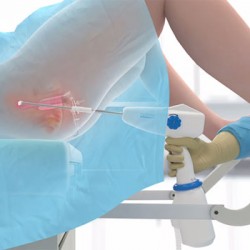Cervical cryosurgery or cryotherapy is a gynecological treatment that freezes a section of the cervix. Cryosurgery of the cervix is most often done to destroy abnormal cervical cells that show changes that may lead to cancer. These changes are called precancerous cells. Your gynecologist will probably use the term cervical dysplasia.
Cryosurgery is done only after a colposcopy confirms the presence of abnormal cervical cells.
These may initially be seen on a Pap smear. Cryotherapy is also used for the treatment of cervicitis or inflammation of the cervix. Cryosurgery is not a treatment for cervical cancer.
Effectiveness of Cryosurgery for Cervical Dysplasia
Cryosurgery is an adequate treatment for most cases of cervical dysplasia destroying all of the abnormal cervical tissue in over 85 percent of cases. However, when the cervical changes are located in the upper section of the cervix a cone biopsy is recommended rather than cryotherapy.
What Happens During Cryosurgery
Cryosurgery is performed by gynaecologist in Muzaffarpur at the hospital while you are awake. It starts out similar to a pelvic exam. You will be asked to undress from the waist down and lie on an exam table with your feet in stirrups. A speculum is inserted into your vagina to hold the vaginal canal open so that your cervix can be seen. However, that’s where the similarity ends.
Cryotherapy uses a special instrument called a cryoprobe. Here are the next steps of the procedure:
- The cryoprobe is inserted into your vagina until it firmly covers the abnormal areas of cervical tissue.
- Next, liquid nitrogen or compressed argon gas begins to flow through the cryoprobe and cool it to a very low temperature.
- This causes the metal cryoprobe to freeze and destroy superficial abnormal cervical tissue.
- The most effective treatment result is obtained by freezing for three minutes, letting the cervix thaw, and repeating the treatment for three more minutes.
What You Feel
You may feel some slight cramping. You may experience either a sensation of cold or of heat.
Care After Cryosurgery
You can return to most normal activities the day after cryosurgery; however, there are a few things you should take note of for the first two to three weeks following treatment:
- It is normal to experience a watery discharge for the first few weeks. This is caused by the sloughing of dead cervical tissue.
- Do not insert anything into the vagina for at least two to three weeks. This means no tampons, no douches, and no sexual intercourse.
Cryosurgery is relatively risk-free, producing fewer complications than any other gynecological procedure. After cryosurgery, you will need Pap tests every three to six months for a period of time. Once you have had several normal Pap smears in a row, your doctor will discuss with you how often you need future screening for cervical cancer.

